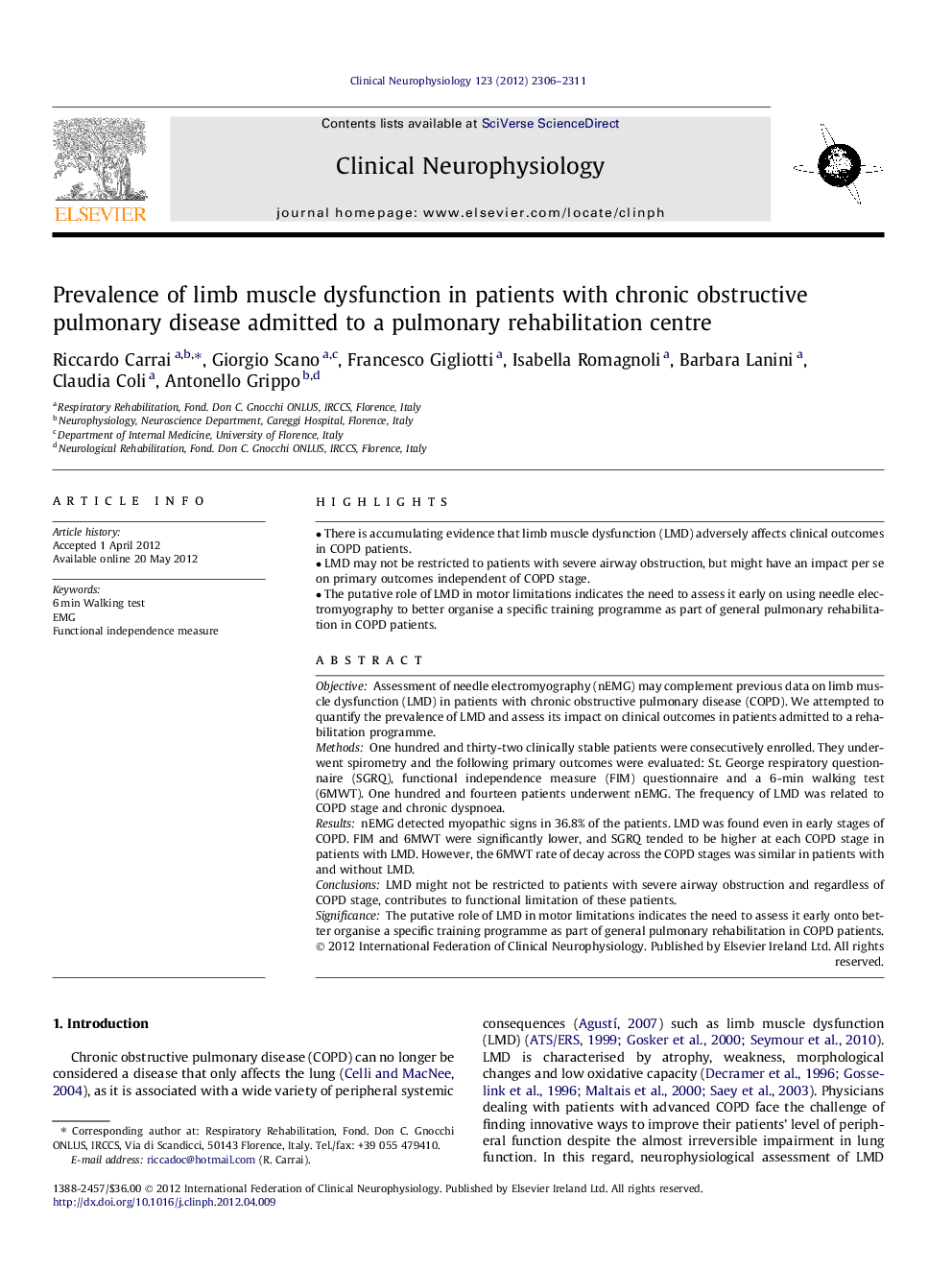| Article ID | Journal | Published Year | Pages | File Type |
|---|---|---|---|---|
| 3043123 | Clinical Neurophysiology | 2012 | 6 Pages |
ObjectiveAssessment of needle electromyography (nEMG) may complement previous data on limb muscle dysfunction (LMD) in patients with chronic obstructive pulmonary disease (COPD). We attempted to quantify the prevalence of LMD and assess its impact on clinical outcomes in patients admitted to a rehabilitation programme.MethodsOne hundred and thirty-two clinically stable patients were consecutively enrolled. They underwent spirometry and the following primary outcomes were evaluated: St. George respiratory questionnaire (SGRQ), functional independence measure (FIM) questionnaire and a 6-min walking test (6MWT). One hundred and fourteen patients underwent nEMG. The frequency of LMD was related to COPD stage and chronic dyspnoea.ResultsnEMG detected myopathic signs in 36.8% of the patients. LMD was found even in early stages of COPD. FIM and 6MWT were significantly lower, and SGRQ tended to be higher at each COPD stage in patients with LMD. However, the 6MWT rate of decay across the COPD stages was similar in patients with and without LMD.ConclusionsLMD might not be restricted to patients with severe airway obstruction and regardless of COPD stage, contributes to functional limitation of these patients.SignificanceThe putative role of LMD in motor limitations indicates the need to assess it early onto better organise a specific training programme as part of general pulmonary rehabilitation in COPD patients.
► There is accumulating evidence that limb muscle dysfunction (LMD) adversely affects clinical outcomes in COPD patients. ► LMD may not be restricted to patients with severe airway obstruction, but might have an impact per se on primary outcomes independent of COPD stage. ► The putative role of LMD in motor limitations indicates the need to assess it early on using needle electromyography to better organise a specific training programme as part of general pulmonary rehabilitation in COPD patients.
